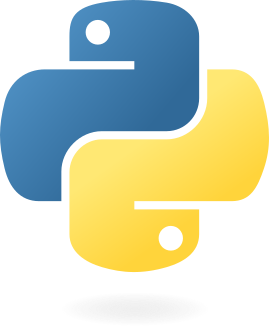- A minimal, Python repository template with .gitignore, .vscode extensions, code formatter and linter.
- Built in CI-CD for better deployments.
This repo includes a recommended set of VS Code extensions and settings to enhance Python development.
To ensure a smooth development experience, install the following extensions by adding them to your .vscode/extensions.json file:
{
"recommendations": [
"ms-python.isort", // Sorts Python imports automatically
"ms-python.flake8", // Linter for enforcing code quality
"ms-python.python", // Core Python extension for VS Code
"ms-python.pylint", // Another Python linter
"ms-python.debugpy", // Debugging support for Python
"yzane.markdown-pdf", // Converts Markdown to PDF
"ms-toolsai.jupyter", // Jupyter Notebook support
"qwtel.sqlite-viewer", // View SQLite databases
"ritwickdey.liveserver", // Live server for web development
"ms-python.vscode-pylance", // Python language server
"ms-toolsai.jupyter-keymap", // Key bindings for Jupyter
"ms-python.black-formatter", // Black code formatter
"ms-toolsai.jupyter-renderers", // Jupyter notebook renderers
"ms-toolsai.vscode-jupyter-slideshow", // Jupyter slideshow support
"ms-toolsai.vscode-jupyter-cell-tags" // Jupyter cell tagging
]
}To maintain consistent formatting and linting, use the following settings in .vscode/settings.json:
{
"[python]": {
"editor.defaultFormatter": "ms-python.black-formatter", // Use Black for formatting
"editor.formatOnSave": true // Auto-format on save
},
"black-formatter.args": ["--line-length", "200"],
"flake8.args": ["--max-line-length=200"],
"pylint.args": ["--max-line-length=200"],
"editor.formatOnSave": true,
"editor.formatOnPaste": true,
"diffEditor.codeLens": true, // Show inline code lens in diff view
"editor.codeActionWidget.includeNearbyQuickFixes": true // Enable quick fixes
}This setup ensures consistent formatting, efficient linting, and an improved development workflow. 🚀
Always use the Git template repository to create your project. It contains the necessary template code required for developing automation scripts. You can access it here: PyBase GitHub Repository.
To develop your script, always create a new virtual environment using Python 3.10.11, as this is the version used in the production server.
python3 -m venv venv
source venv/bin/activate # For macOS/Linux
venv\Scripts\activate # For WindowsOnce the virtual environment is activated, install the required dependencies:
pip install -r requirements.txtDuring development, use pip to install additional packages. Before pushing changes to GitHub, update the requirements.txt file:
pip freeze > requirements.txtThis ensures that all required dependencies are stored and can be installed in production.
Before deploying the script, ensure your deployment.yaml file is available at the root of the project. This file specifies the necessary environment variables and deployment settings.
Example deployment.yaml format:
repo_url: "https://github.com/SinkuKumar/PyBase.git"
branch: "main"
commit_hash: ""
local_dir: "./Users/Sinku/Desktop/Deployment"
exclude_ext: ".ipynb"
env:
# SMTP Server Credentials
SMTP_ADDRESS: "smtp.office365.com"
SMTP_PORT: 587
SMTP_ACCOUNT: "email@domian.com"
SMTP_PASSWORD: "secret-password"
# SQL Server Credentials
SQL_SERVER: "127.0.0.1"
SQL_DATABASE: "DB_Name"
SQL_USERNAME: "username"
SQL_PASSWORD: "password"To commit and push your changes, use the following commands:
git add .
git commit -m "Your commit message"
git pull
git pushOnce the code is pushed to GitHub, trigger the deployment script by running:
python utils/deployment.pyIf you encounter an issue after deployment, you can revert to a previous commit using git log, which provides commit history.
Example:
(venv) Sinku@Macbook4 CI-CD-Python % git log
commit f96b8b261cf08040c023e2328366dfb751404629 (HEAD -> main, origin/main, origin/HEAD)
Author: SinkuKumar <sudosinku@gmail.com>
Date: Tue Mar 11 14:32:25 2025 +0530
Add deployment configuration and enhance deployment functionalityTo deploy a specific commit, update the commit_hash in deployment.yaml and redeploy the script. This ensures that your project rolls back to the desired checkpoint.
